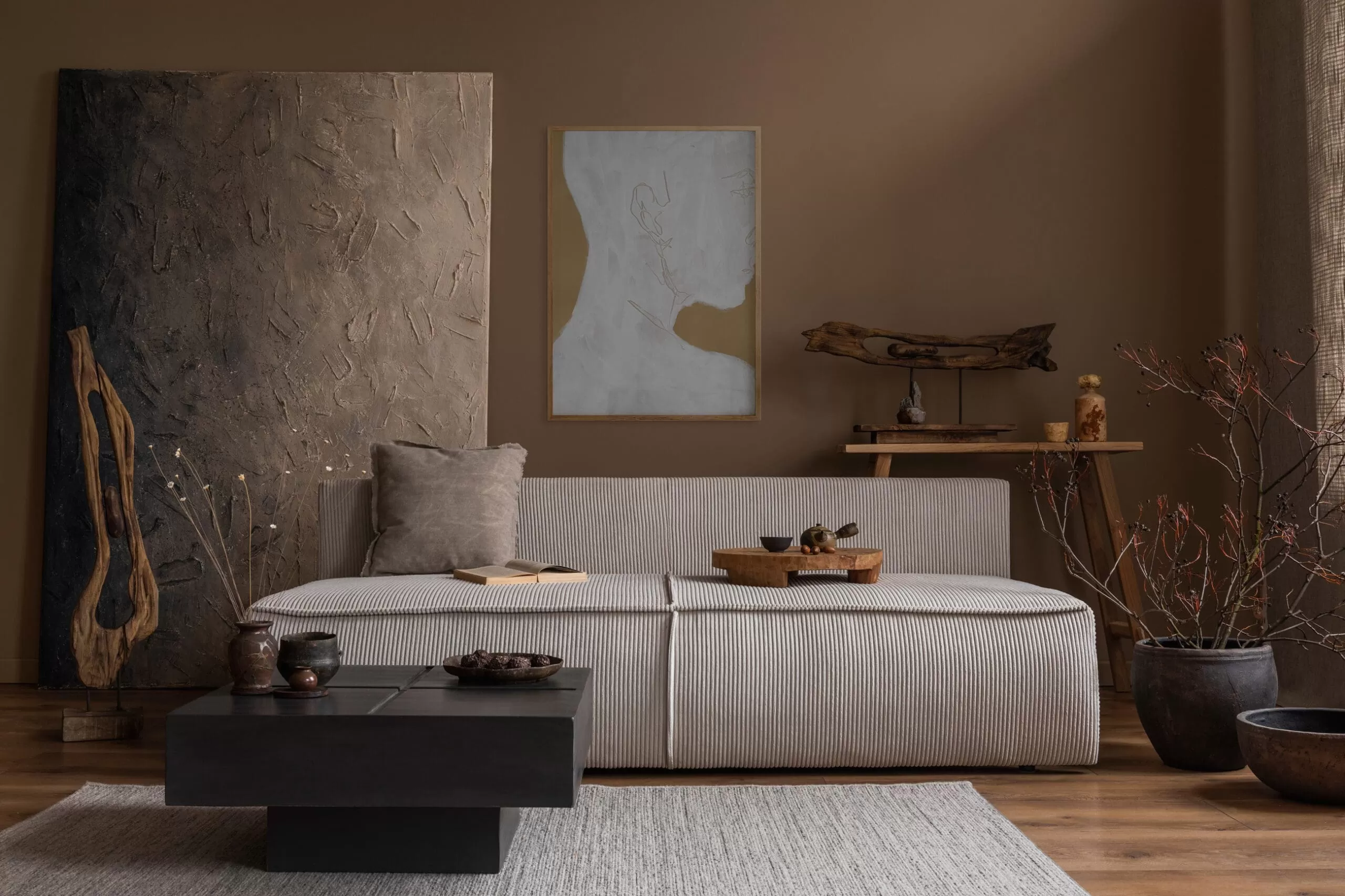
In contemporary society, marked by a fast-paced lifestyle, frequent challenges, and an incessant quest for perfection, the Wabi Sabi philosophy from Japan offers a deeply rooted approach to living. More than just an aesthetic choice, Wabi Sabi is a life philosophy that celebrates the beauty in imperfection, transience, and simplicity. Originating from Shintoism and Buddhism, this philosophy provides a transformative view of life and surroundings.
Wabi Sabi philosophy in interior design
Simplicity as a Foundation: Wabi Sabi emphasizes the importance of simplicity in all aspects of life, including interior design. Instead of cluttering the space with unnecessary elements, the focus is on minimalism. Choosing basic furniture elements with an emphasis on functionality allows for a focus on the essential, creating a space that reflects the essence.
Natural Materials for Authenticity: Using natural materials is key to achieving authenticity according to Wabi Sabi principles. Wood, stone, and textiles add elements of imperfection, making the space warm and connected to nature. The aging of wooden surfaces becomes a story of the passage of time.
Transience and Change: Wabi Sabi values transience and the changes that come with time. Embracing change is crucial to this interior design experience. Elements such as antique pieces or vintage decorations add depth and character to the space.
In the context of interior design, the Wabi Sabi philosophy can be expressed through the careful selection of art posters. Choosing art posters that reflect minimalism creates a balance between aesthetics and simplicity. Simple motifs, subtle earthy colors, and clean lines ideally fit the Wabi Sabi aesthetic.
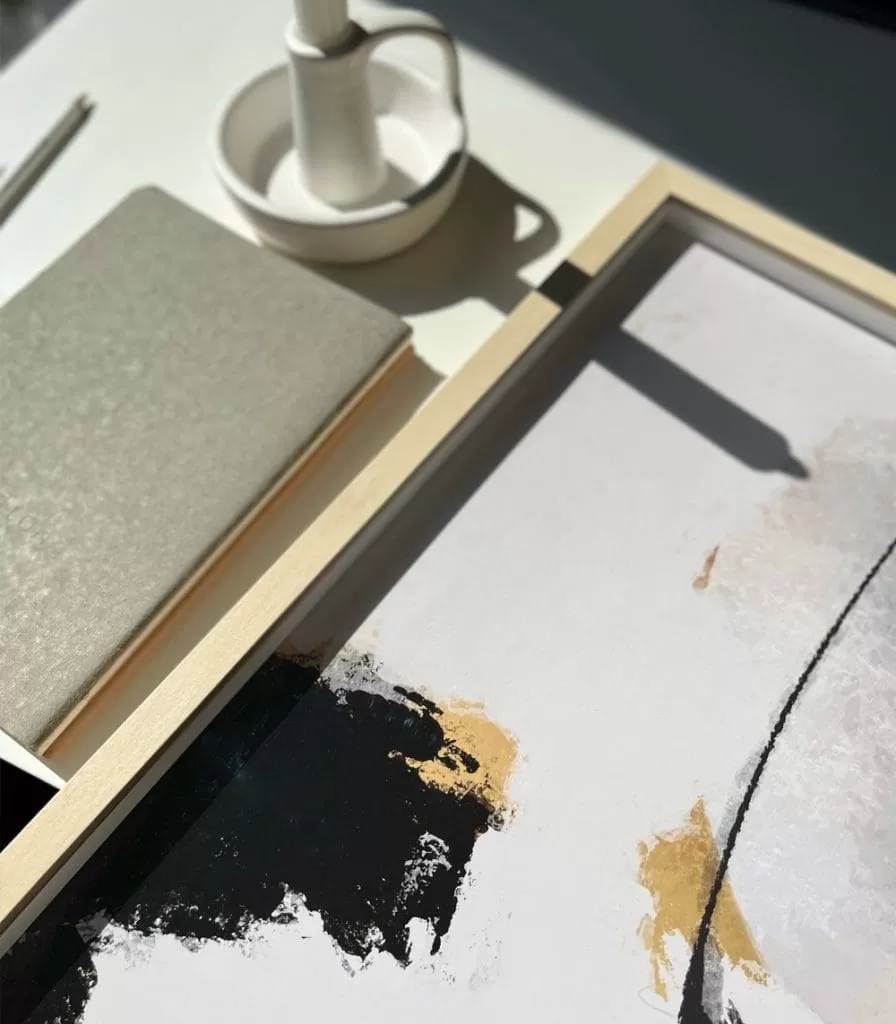
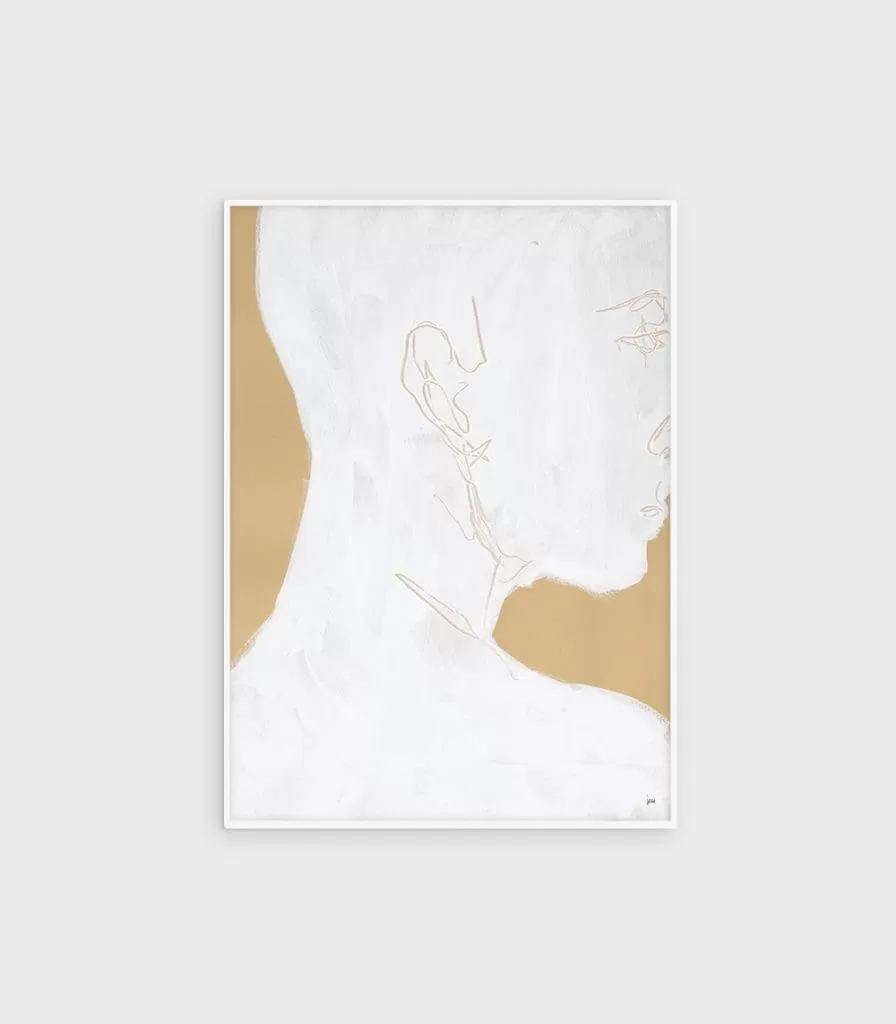
Wabi Sabi is not just an aesthetic concept but a way of life that promotes inner balance. Integrating this philosophy into interior design is not only about aesthetics but also about creating a space that reflects your values and need for a tranquil haven. By combining simplicity, natural materials, and thoughtfully chosen decor, your home becomes a place where imperfection becomes a source of beauty.
A life philosophy that transforms
Wabi Sabi philosophy is not limited to interior design; it permeates every aspect of life. Through its lens, we learn the importance of accepting change, savoring the moment, and finding beauty in modesty. The ancient Japanese concept of Uketamo, meaning “With humility, I accept with an open heart,” is deeply rooted in Wabi Sabi. Learning to accept all aspects of life, whether good or bad, is the first step towards freedom from suffering. Embracing the imperfection of our environment and our own lives opens doors to growth, allowing us to learn from our challenges.
Wabi Sabi values transience and the changes that come with time. Embracing change is crucial to this interior design experience. Elements such as antique pieces or vintage decorations add depth and character to the space.
The Wabi Sabi philosophy reminds us of the natural flow of life – constant change. Instead of striving for unattainable perfection, we should aim for excellence. This means giving our best to be the best version of ourselves, despite imperfections.
Practicing Kintsugi, the art of repairing broken objects with golden seams, becomes a symbol of the Wabi Sabi philosophy. Every crack or damage on an object becomes a visible mark of its past fate, making it unique and valuable. This practice teaches us to appreciate beauty in what seems broken, reminding us that life’s scars are part of our storytelling.
Releasing the energy of space
When applying the Wabi Sabi philosophy to interior design, we create a space that is not only visually appealing but also has a deep emotional connection. Key elements of Wabi Sabi aesthetics in interior design include:
Simple Furniture: Choosing simple and functional furniture is crucial for achieving the Wabi Sabi aesthetic in the home. Minimalist designs for tables, chairs, and cabinets create a breathing space, making the area warm and inviting.
Natural Materials: Integrating natural materials such as wood, stone, and bamboo creates a sense of connection with nature. These materials not only contribute to the aesthetics but also release energy into the space.
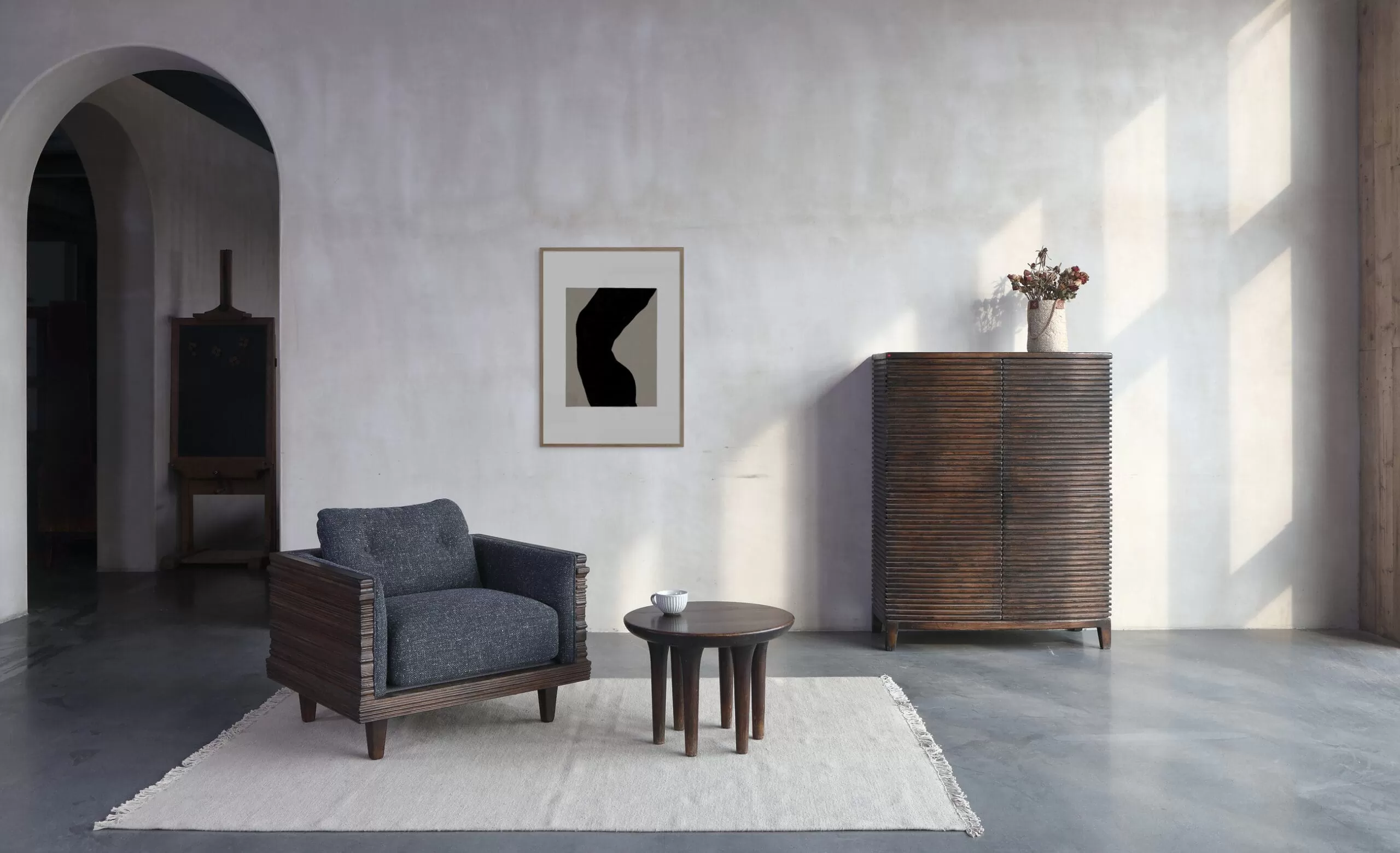
Elements of Transience: Artistic elements that emphasize the passage of time and change add depth to the space. Older furniture pieces or antique items contribute to the Wabi Sabi atmosphere.
Color Harmony: Muted, natural colors like brown, green, and gray create harmony in the space. Colors that evoke nature add warmth and balance, creating an environment that invites relaxation. In these shades and with a minimalist style, you can also choose hdizajn posters as decoration for such interior design.
Light and Airiness: Natural light plays a key role in Wabi Sabi interior design. Large windows, airy curtains, or glass walls allow light to enter the space, creating a sense of spaciousness and tranquility.
Inner peace through Wabi Sabi aesthetics
By incorporating the Wabi Sabi philosophy into interior design, we create a space where aesthetics not only appeal to the eye but also touch the soul. Simplicity, natural materials, the passage of time, and artistic elements together create a harmonious blend. Art on the walls, especially art posters, becomes a means of expression and an additional dimension that enhances the beauty of the space. Through Wabi Sabi aesthetics, we create a home that is not only visually impressive but also provides inner peace.
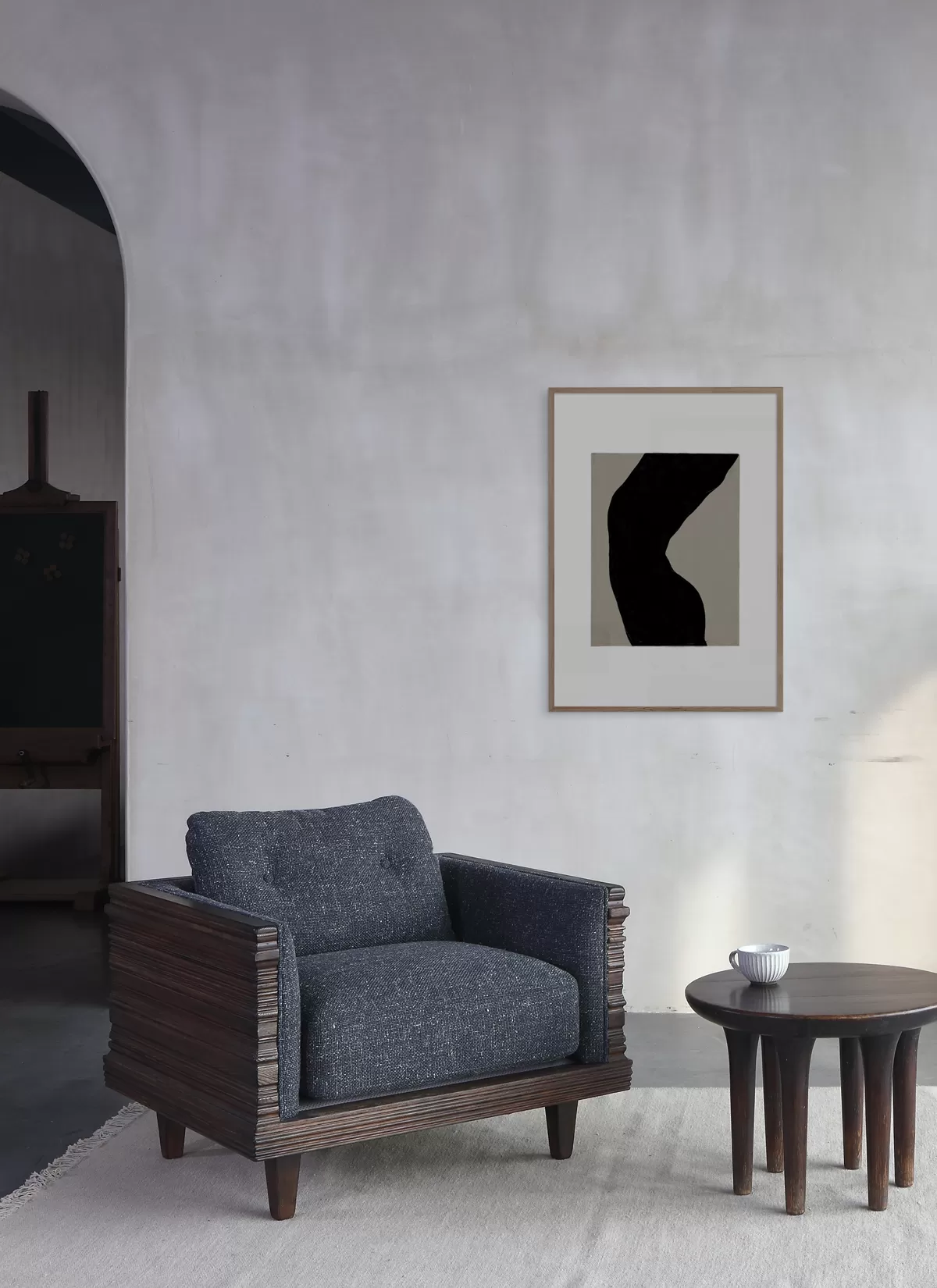
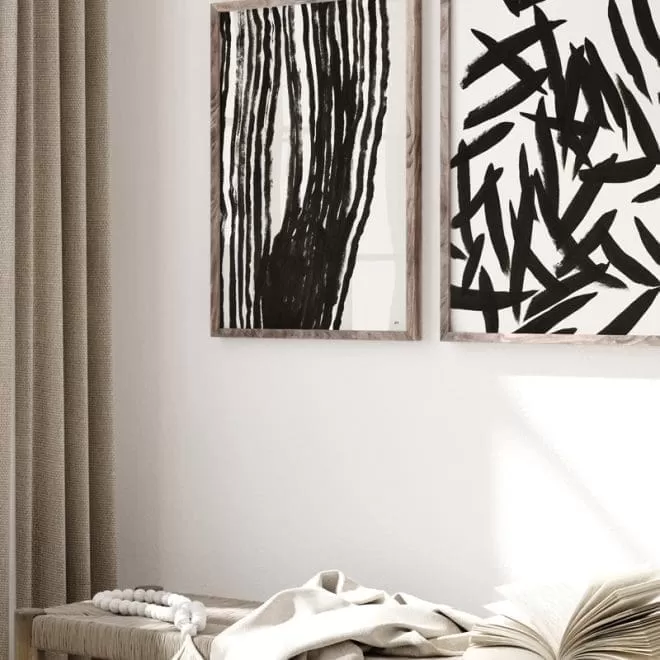
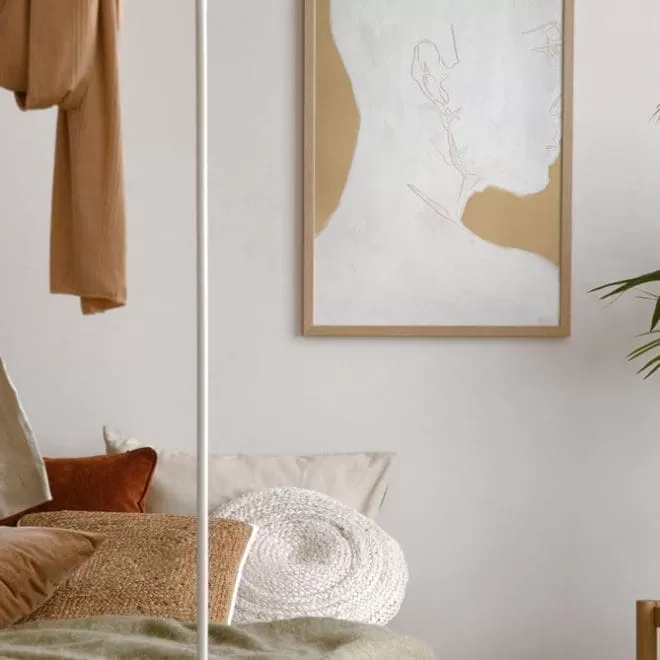

 No products in the cart.
No products in the cart.